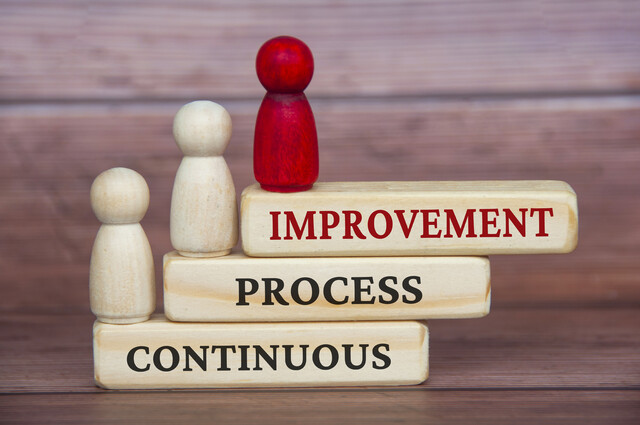"Meetings" conjures images of people stuck in a conference or board room, bored to tears, while some big shot drones on and on about a topic only 1 percent of the attendees care anything about. Meetings are considered time-wasters, boring, a must-do item, face time for bonus points, ego boosting, a political maneuvering event, and a time to catch up on report reading. What most people do not grasp is meetings are a time to actually accomplish a few goals and give direction for where an organization needs to go that day, week, month -- or even year. They should be important. The reason they are not successful is because the facilitator did not make them informative, needed, and rewarding.
A Successful Meeting Defined
Meetings are a standard practice for disseminating information, for planning events or projects, handling issues, developing strategies, and/or for making decisions to allow work flow to continue. Properly planned and executed meetings take W-O-R-K � a Working Order of Realized Knowledge. In other words, the meeting facilitator planned meeting objectives, decided who needed to attend, set an order of business -- along with a timetable -- and executed said plan.
It is vital for leadership to ensure meetings are profitable to a company in light of the hourly wages represented by all the individuals sitting in the room. Meetings should be money well-spent and should be considered as launching pads to productivity. The answer to two simple questions will let a facilitator know if the planned meeting was a success. "What were the meeting's results?" Was anything accomplished?
The other question to be answered is, "How was the meeting beneficial to the participants?" To answer that question the facilitator might need to answer:
-
How did the decisions from the meeting come about?
-
Did the participants communicate and voice suggestions, concerns, and work as a team?
-
What was their attitude entering and leaving the meeting?
-
Were objectives met?
-
Who or what contributed to the meeting's accomplishments?
-
Was the meeting's timetable met?
The Objective
For a meeting to be deemed a success it must have a desired outcome. Too many times, leadership calls a meeting with agendas a mile long and most items on their list are ill-conceived and undefined. Some elements to be discussed are topics from past meetings that were left unresolved. Other times, meetings are held to discuss when is the best time to have the "all-important and needed meeting." For meetings to be a success, there must be meat to the meeting. Without that indispensable ingredient, participants walk out desiring another meeting to fulfill their hunger for needed direction, instruction, and guidance.
Too many times, the knee-jerk reaction is to call a meeting, when the only thing needed is for the individual to stick his head in a few doors and ask a question. For the meeting to be useful there must be a purpose and it's the facilitator's job to consider the desired outcome from the called meeting. Good questions to ask before calling the meeting include:
-
Am I looking for a decision?
-
Is there a need to create a list of ideas for ______?
-
Is the meeting to obtain reports on various projects?
-
Am I calling the meeting to communicate a specific message? If so, can this be done through e-mail?
-
Is this a planning session?
Once the reason for the meeting and the desired outcome has been nailed down, then it is time to consider who needs to attend the meeting. Having a standard group to be called for every meeting is a total waste of precious time for many sitting in the room. Calling specific people to specific meetings makes meetings productive and useful.
Time Management
Time is money, and money wasted is sitting in a meeting you have no business in. Money also is wasted sitting in a meeting that should have been over in 10 minutes, but you are now into your third hour. To ensure a meeting starts on time, send out a meeting's agenda and time table. Allow about 10 minutes for social time with coffee and pastries, bagels, or cookies. To encourage everyone to be on time have a "friendly" penalty for the last individual coming to the meeting. One suggestion could be the last person is handed a note pad and must take notes to be distributed to all the participants after the meeting � they are the meeting's "clerk. "
Another way of ensuring time limits are met could be by removing all chairs. Participants could stand around a white board or bar tables and have their pre-planned discussion. If the meeting is to give fast status reports and only five or six people are attending, then have a speed meeting while exercising. Have a predetermined distance � a flight of stairs, once around the building or parking lot, or some other type of distance � and have each individual give their verbal report during this set distance. For a meeting to generate ideas, get outdoors and get moving, so people are stimulated and feel free to talk, because of the open environment. This type of strategy tells all participants they need to be prepared when attending the meeting.
In other words, keep meetings to the absolutes, and do not let "other stuff" worm its way into the meeting. Keep to the predetermined times; this is done by keeping to the agenda. If a stray topic is introduced in the meeting, treat it like a stray dog. Identify the stray dog and tell that individual that's a great thought, idea, suggestion, or it's something that should be looked at, and have that individual investigate the stray topic and create a report, including his recommendations, and to distribute the report to everyone at the meeting within the week. A stray only will be introduced once in any meeting for a very, very long time. People tend to not want extra work that is spotlighted in such a way. The message will be clear: Meetings are for the items listed on the agenda, and the times are locked, so we all can get back to work.
If a meeting's agenda starts to get long, and the meeting is beginning to take significant time, consider holding several shorter meetings, so participants do not go brain dead and must juggle their schedule to accommodate the long meeting. Realize that many participants will have to spend an hour after the meeting returning phone calls, approving requests, answering emails, etc., just from being away from their desk for the meeting. So take the length of the meeting's agenda into consideration when planning.
Communicate again after the meeting
For objectives to be any good they must be executed. If execution is nil, then success is void. You will be left with a big fat zero without a line � your meeting will have produced nothing. One of the hardest things for leadership to learn is telling people something is not enough. Having a blowout event to launch the latest and greatest program in an organization's history does not mean everyone within the organization gets it � especially management.
The norm is leadership believes that when they tell people something, they actually "get it" the first time. Leaders assume people are "listening." They think the people are digesting the information, picturing what the message looks like, and understand where they fit into the picture. Leaders believe there is an immediate buy-in and management will immediately know the strategies they need to implement, so this new plan actually will get off the ground. There is the assumption that everyone within the organization will understand how to fit this new idea into their current workload, and make everything gel, and goals to be continually and seamlessly met. This is when someone needs to give leadership a "hello moment." Hello, is there anyone home? This never happens after stating the message one time.
Meetings are a great starting point for new agendas, items, policies, and ways of doing business. But meetings should be considered the introduction and nothing more. A meeting is not the only time the message should be broadcast. The meeting is the beginning of the investment process. Follow-up is necessary and the most important aspect of success. For there to be collaboration, everyone must clearly understand the message and its processes. Without this, no progress will be made.
The following are the all-important 10 steps needed to communicate any plan within an organization and see any progress:
1. Have a continuous communication plan in place. For there to be communication, there must be two-way involvement. Leadership must continuously communicate their message throughout the whole process, and there needs to be an avenue for progress reports, suggestions, process glitches, success stories, and any other information to be forwarded to leadership. It's a two-way road. Leadership must realize not everyone was in the meeting who will be involved in whatever implementation is taking place. You, as the leader, are familiar with your agenda � after all, it's your ideas � but people will not get it after hearing it once, so continual communication is needed.
2. Know everyone was not really listening the first or second time � include the third time in that process, too. People inherently do not like anything "new" that is going to mess with their comfortable routine. They do not like change. Also, people do not take anything said the first time seriously -- especially if it involves something new taking place -- since many things within an organization are "said," with few actually being acted upon.
3. Explain why. It's as simple as giving the background for the reason you called the meeting, and why there are new ideas, new items, or a new strategy. Tell everyone why and explain the reason behind it. Give the people a glimpse at the big picture. Give the reason for the "who, what, when, and why." Cover all the areas clearly and concisely. And be prepared to follow-up again, and again, and again.
4. When creating the follow-up message, be sure to explain to everyone what is not changing. This allows some comfort and gives a sense of security. This lets the organization know the world has not fallen apart around them. This opens their ears, so they will begin to listen to any changes within your message.
5. Say thank you. Thank participants for attending the meeting. Thank them for all their efforts so far. Thank them for being a part of the team. Be grateful for the team and let them know you are grateful � thank them.
6. Now is the time in the follow-up message to finally repeat the reason you called the meeting. Repeat the message. Explain what is needed, or about to happen, and the scale in which it will take place. Give the goals, deadlines, or whatever information is needed -- and also explain how the feedback process will work. Give details and then details about the details. Be explicit.
7. With Step 6 in mind, remember KISS: Keep It Simply Simple. The trick is to make it simple enough your 10-year-old can follow it. That is simple. The more complicated the message, the more chances it has for utter failure.
8. Tell them what it specifically means to the individuals within the organization. Give them the impact statement � both the positive and the negative. Do not try and hide the ugly by glossing over it. Give it in frank and simple terms.
9. This is the part most leaders do not understand. People must hear or see a message seven times before they actually listen to it and comprehend it. And for every one time they see or hear the message, they have to be exposed to it three times for a grand total of 21 times. If you had a serious message in your meeting, the people must see it and be exposed to it 21 times for it to sink in. Be consistent in all communications for collaboration to truly work within an organization and for said organization to be a true success in its field.
10. Even if everything goes off without a hitch, and everything laid out in the meeting is accomplished, and collaboration is flourishing � people have a tendency to migrate back to the comfortable old way of doing things. Collaboration, quick and successful meetings with strict agendas, must become a part of the organizations fabric and "norm" for it to stick for good. So keep the communications open and allow people to talk freely, so as the leader, your finger is on the pulse of the organization.
























